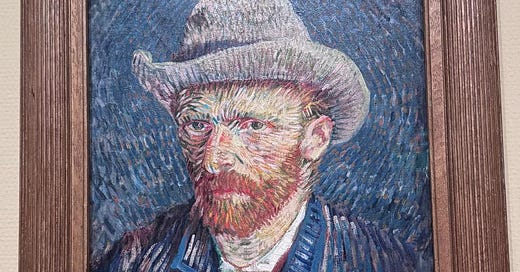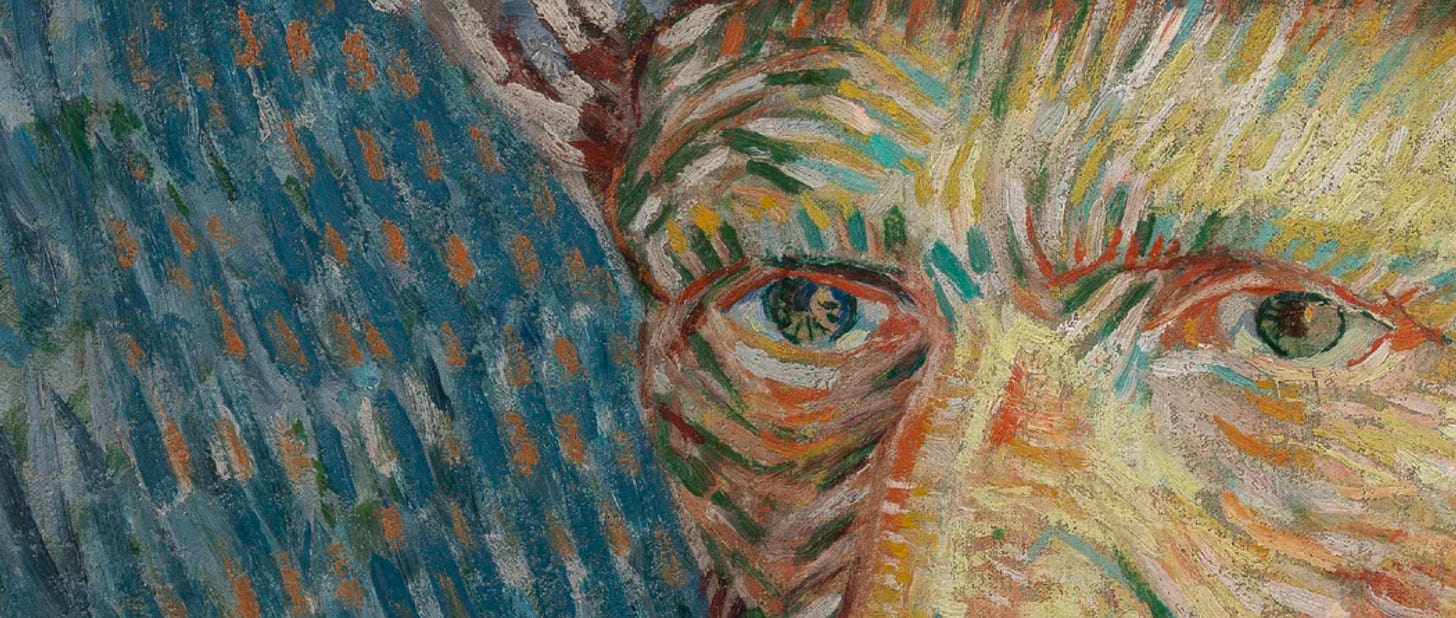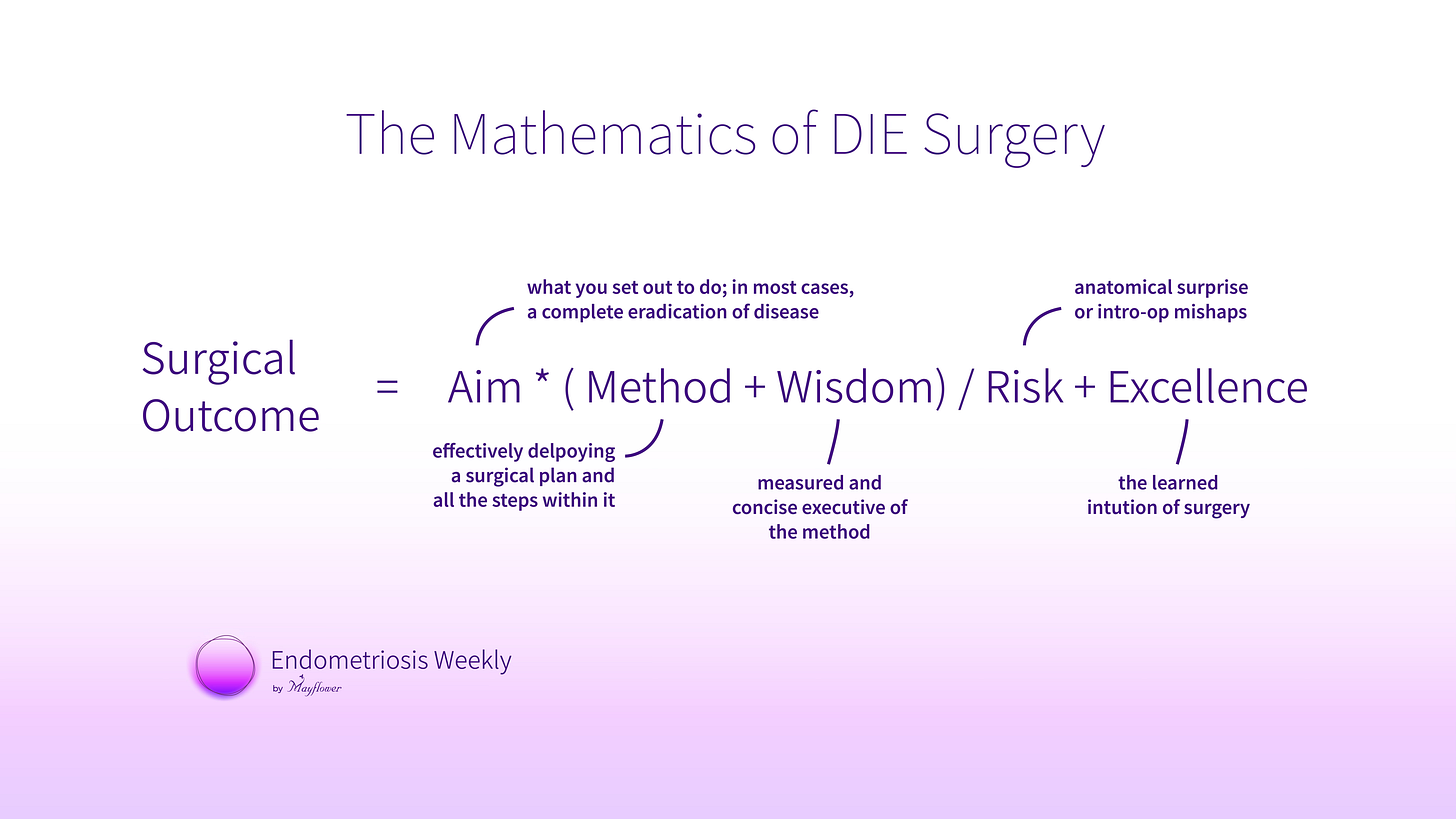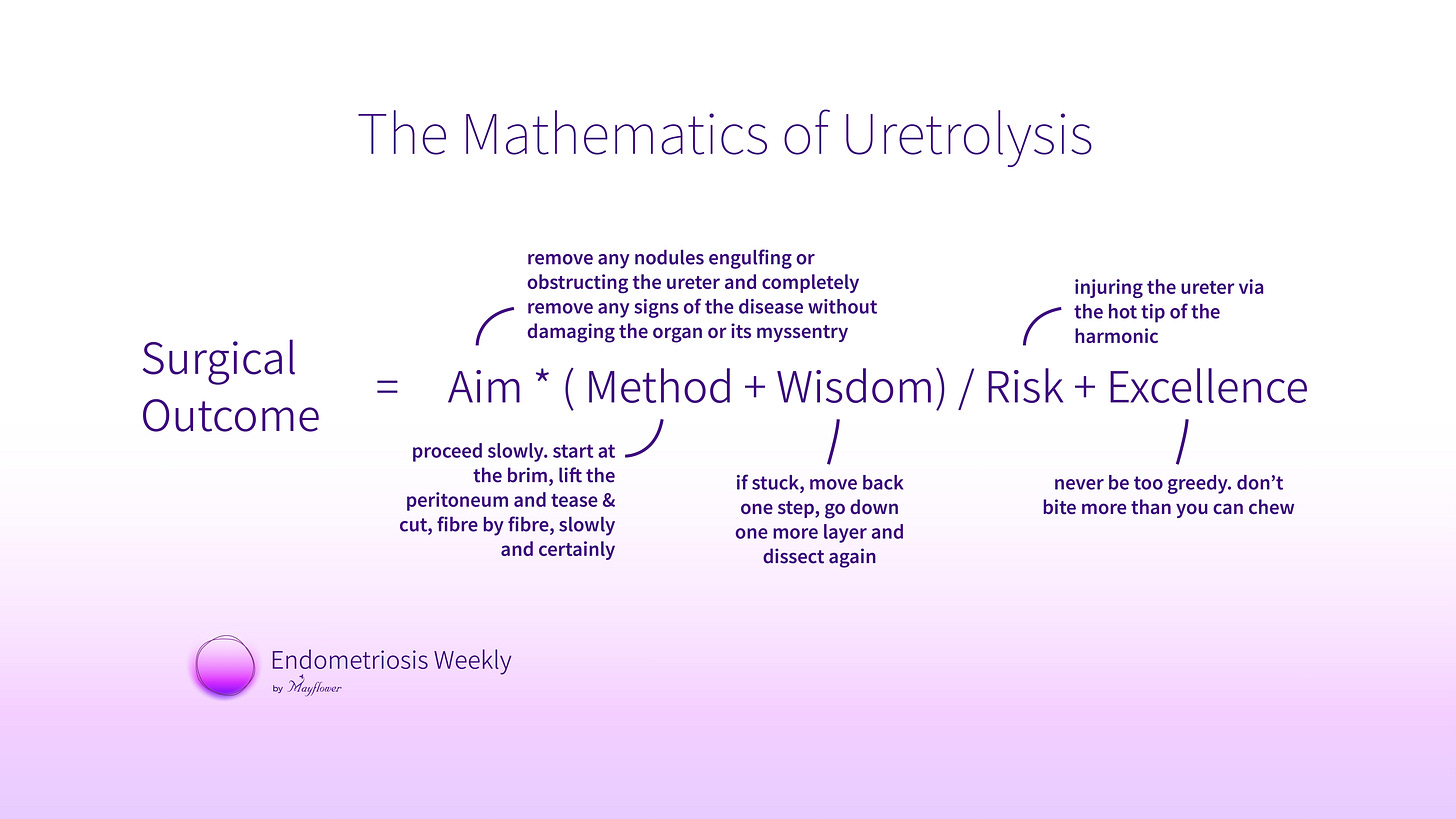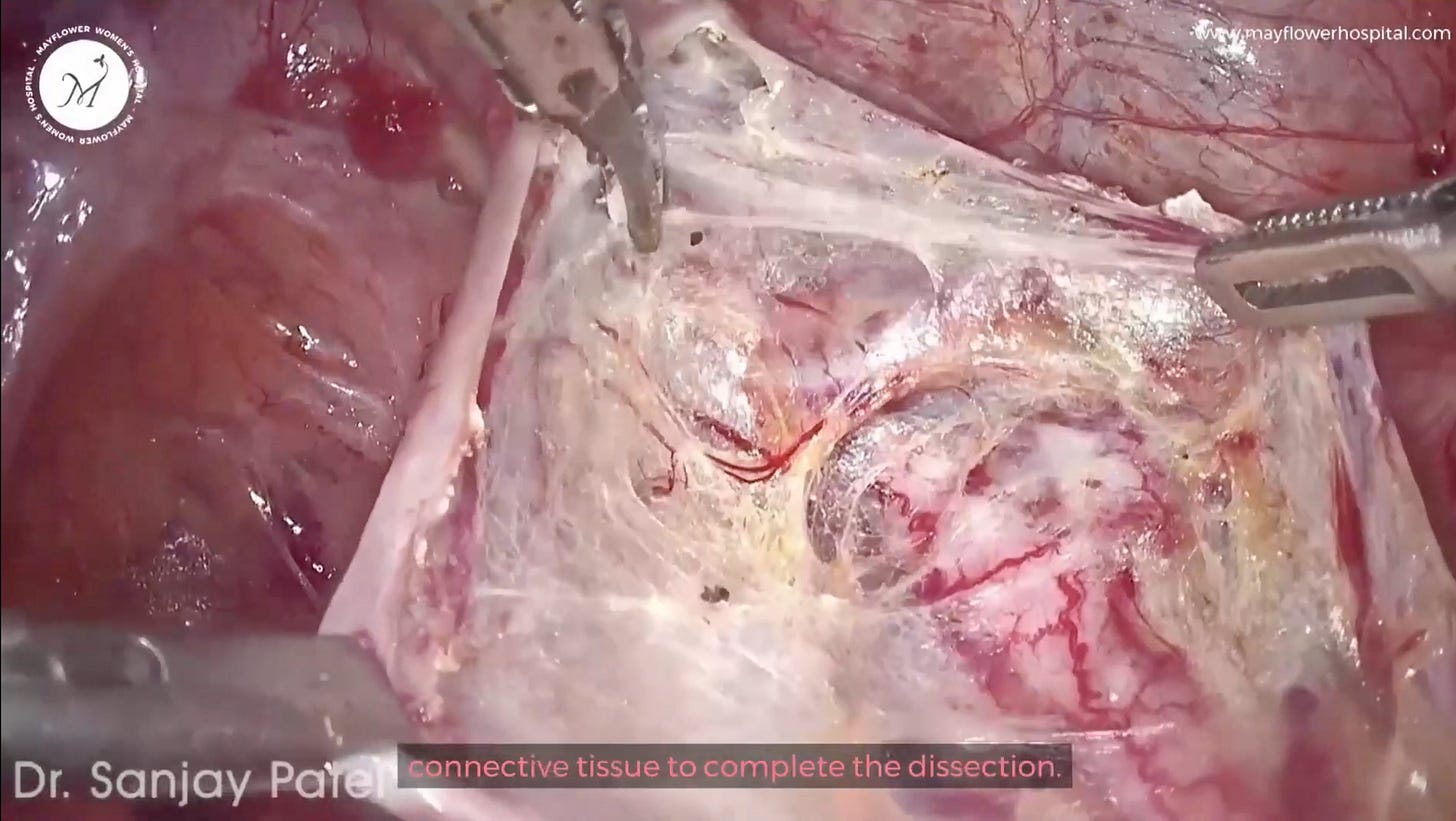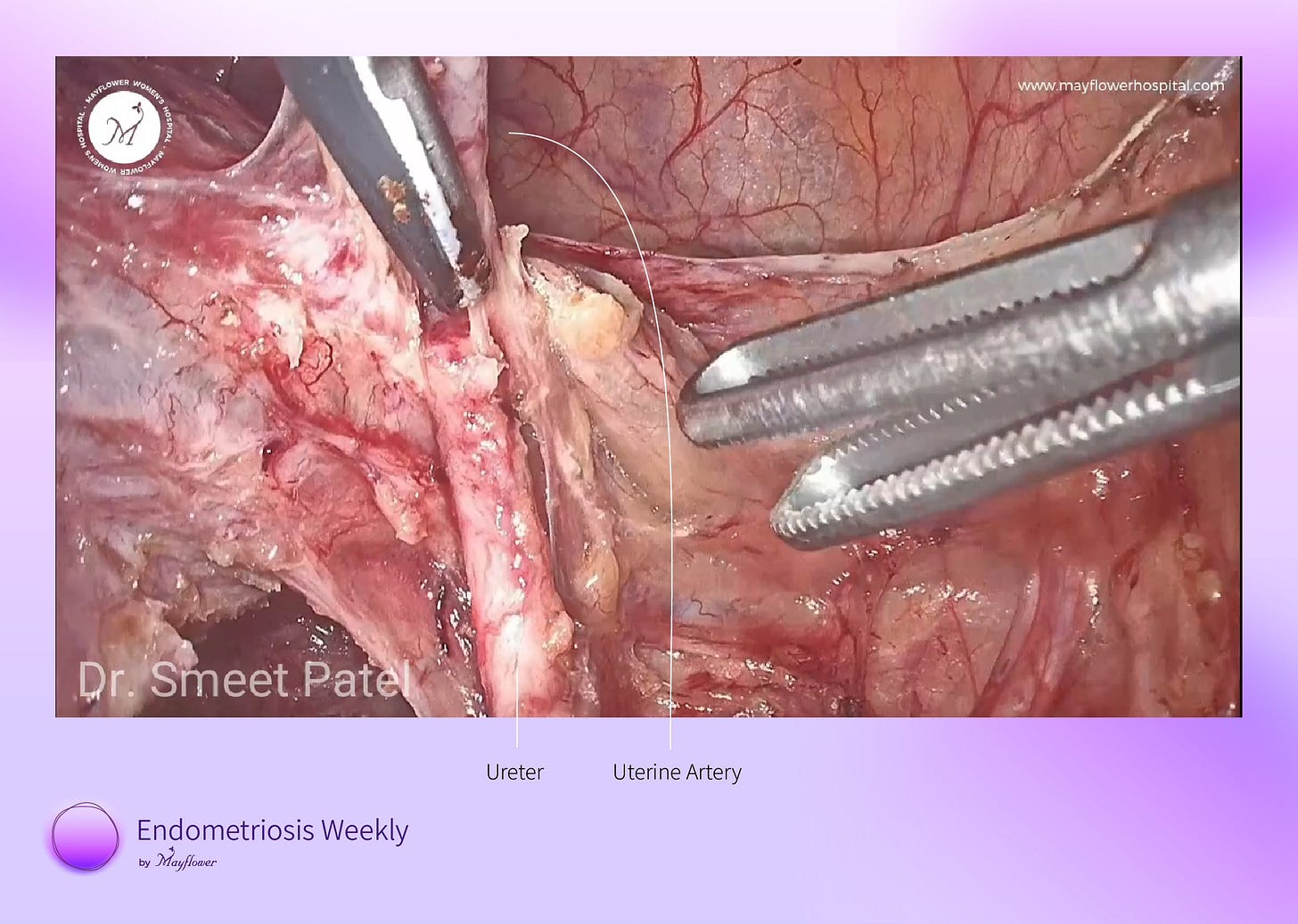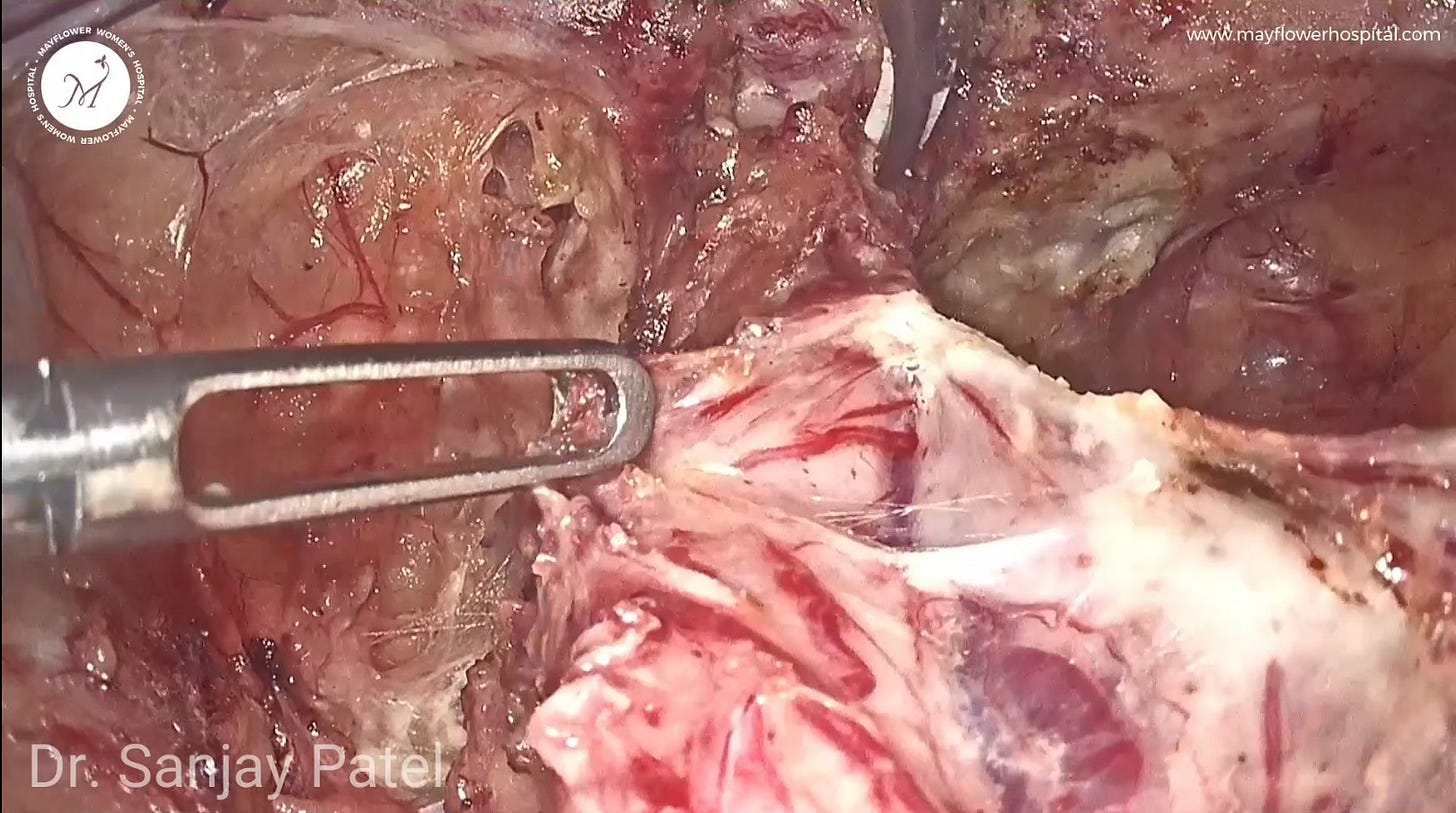Uretrolysis : The Mathematics of Endometriosis Surgery Ep 2
If you look closely, it's an artistic endeavour
We’re always taught to stay away from the ureter. “Not my monkey, not my circus” as a colleague once put it. But over the last several years, endometriosis has forced us to look at the ureter as a victim in need to urgent care, and compassion.
Welcome to the second edition of our series The Mathematics of Endometriosis Surgery. We will begin looking at uretrolysis soon but before we do, I want us to take a step back and marvel at this self-portrait by Van Gogh.
That’s the seminal artist and world renowned painter Vincent Van Gogh. Painted by Vincent Van Gogh. It is amongst the best of the 35 self portraits that he made of himself over the years. Here are some more taken from the vangoghmuseum.nl
If you take a much closer look at them you start to notice the finer details that bring it to life. Hold on, let me blow it up for you. Notice how every single brush stroke is unique, has its own role to play in the painting.
Zoom in further and you begin to see how each stroke imparts an energy to the painting. They’re dynamic, giving energy. The thickness of the paint gives you depth and with it a perception of the third dimension.
And the strokes, as they move outwards, also have light play built into them giving the painting a vibrant, almost luminous effect. The contrast between warm tones (yellows, oranges, reds) and cool blues creates visual depth. Van Gogh often used brushstrokes to convey emotion. The turbulent strokes around the face might represent his inner turmoil, while the structured yet fragmented strokes on the face and hat show a combination of resilience and vulnerability.
The Surgery
A lot of what we do in the OT is also similar to Van Gogh’s dynamic brush strokes. Thoughtful, slow, considered, purposeful, and poignant. Each time we fire a scalpel, it leaves a permanent mark on a canvas that is the human body. We have no opportunity to make mistakes. Neither did Vincent. And yet we must go boldly into the zone of risks and make for ourselves a painting we can someday be proud of.
Uretrolysis and the art of it derives heavily from this philosophy. And we will soon find out why. Before we jump into the surgery though, let’s recap our framework from the last edition
Our surgical outcome is a function of our clarity of aim and purpose, the meticulousness of our method, the tenacity of our wisdom, the awareness of our risks, and our strive for excellence in each step.
Specifically for uretrolysis, this equation comes somewhat looking like this
We have in one of our past editions defined the 5 Levels of Ureteric Dissection which outlines one of the most important complications for the disease in interaction with this organ.
Because of the continuous motility of the ureter, rarely does endometriosis grow readily inwards. In most cases, the growth is circumferential in nature and builds over a long period of time in layers. These laminae are also visible when dissecting and identifying these layers becomes critical in dissecting better over time.
Above is a screegrab from our video about the same topic. You can see the ureter towards the bottom and the tissue growth around it. Preserving the mesentery of the ureter while also dissecting the disease completely is a tough task. To save the organ from injury, we always ensure to keep the energy delivering side of the harmonic towards the top, away from the tissue, and always maintain proper traction and counter traction so as to achieve a predictable effect of dissection.
In the image above you can see how the two graspers are providing a clear plane of dissection along which the harmonic can be dissected.
This approach of laminar dissection is crucial in getting a total and complete surgery in cases of ureteric involvement.
As the involvement progresses, the laminae get thicker and start to impact anatomical normalcy of the organ, in extreme cases structuring it leading to hydroureter and eventual renal failure.
Driving surgical outcome becomes difficult as complexity progresses owing to the pseudo layers formed within the diseased peritoneum.
The image above depicts some of this pseudo layers in action. As complication rises, in cases where patients typically undergo class 3 radical hysterectomy, the whole parametrial tissue has to be removed over the ureter. This radical approach dictates that we be thorough and uncompromising with disease removal but still preserve vital organs.
Subsequently, heavy tissue growth in the tunnel of Wertheim’s or the ureteric tunnel often results in an occlusion of the ureter. Nodules grow radially inwards in the tunnel to a point where they begin to constrict the ureter leading to hydroureter and eventual hydronephrosis upstream.
Observed in cases of deep infiltrating endometriosis, this level of dissection requires extreme caution, and care. When using an energy source, the biggest risk we run is thermal injury to the ureter. In our case this energy source is an ultrasonic scalpel. While dissecting off the diseased parametrium, there are three extremely important steps that must be kept in mind at all time
Use proper traction and countertraction to ensure the correct dissection plane is revealed. Loose tissue can lead to dissection errors, especially near the ureter where thermal injury is a risk.
Handle the ureter with care, particularly since it may be fragile and prone to damage due to stricturing and hydroureter. Extra caution is required to avoid injury from even simple actions like grasping.
Proceed delicately once the correct dissection plane is established. Utilize the tip of the ultrasonic scalpel to grasp, activate briefly, then flick and release nodules to minimize lateral thermal spread and focus actions only on the infected tissue, ensuring slow and precise movements.
Surgeries for Endometriosis are always complex. You’re always dealing with a distorted anatomy. Things aren’t where they’re supposed to be and very often hard to find. Nothing’s more important than being mindful of every step we take. Every cut comes with a consequence.
Which is precisely why the only way to achieve excellence in the procedure of ureterolysis is to always be humble, never get too greedy, and never bit more than you can chew.
That’s it from us for this week. We will see in the next edition with some juicy tips on cystectomy.


